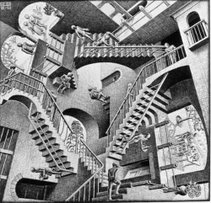
A grammatical category is a set of syntactic features that
- express meaning from the same conceptual domain
- occur in contrast to each other
- are typically expressed in the same fashion
- are often subject to agreement constrains
- Grammatical aspect, which is associated with verbs that express a temporal view of the event or state expressed by the verb
- Grammatical case, which is determined by the syntactic or semantic function of a noun or pronoun
- Definiteness, which is concerned with the grammaticalization of identifiability and nonidentifiability of referents
- Grammatical mood, which is one of the distinctive forms thatare used to signal modality, which in turn is a facet of illocutionary force
- Noun class, which is a grammatical system that some languages use to overtly categorize nouns
- Grammatical number, which expresses count distinctions
- Grammatical polarity, which distinguishes affirmative and negative
- Tense, which typically marked on the verb, that deictically refers to the time of the event or state denoted by the verb in relation to some other temporal reference point
- Transitivity, which is the number of objects a verb requires or takes in a given instance
- Grammatical voice, which expresses the semantic functions attributed to the referents of a clause











No comments:
Post a Comment